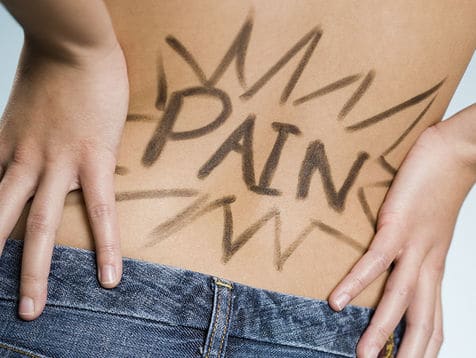 By Rosane Collier
By Rosane Collier
Back pain is the second most common reason people go to the doctors. Guess what? It might be your quadrates lumborum (kwa-DRAY-tus lum-BOR-um). Now that you know how to pronounce it, let’s talk about it a little bit.
There, it is. Nice picture of it!
The quadrates lumborum, let’s call it QL, is responsible for side bending as well keeps us steady while we perform complex movements that need coordination between our upper and lower bodies. This baby works hard.
As far as massage is concerned, it is not an easy muscle to access manually, as it lies deep to the lumbar paraspinal muscles (erector spinae) and the thick layers of fascia and aponeurotic tissue or the lumbar region. The fibers are oblique, the upper fibers from lateral to medial, lower fibers medial to lateral, and the architecture is parallel. That’s too much information.
Let’s talk about what we can do to ease our pain, from carrying back packs to horseback riding and so on. First we need to figure out if the QL is your problem.
![]() Palpation:
Palpation:
Start with palpation: it can be palpated with thumb or finger tips from the side between the last rib and the top of the hip. Technically jargon alert: It’s underneath the paraspinal muscles and lumbar aponeurosis between the last floating rib and the iliac crest. Just a word of caution, when working in a upward direction on QL, do not place excessive pressure on the last rib. It is a unsupported Floating Rib that is joined to the T12 vertebra. It can be broken with enough pressure.
Treatment:
 1.) Myofascial Stretch (That is very good) As you can see a picture is worth a million words.
1.) Myofascial Stretch (That is very good) As you can see a picture is worth a million words.
The client lies prone, and the therapist places their hand nearest the client’s hand flat on the lumbar area lateral to the vertebrae with the fingers over the iliac crest just lateral to the sacrum. Crossing the other hand over or under the first, place it flat on the thoracic area over the lowest three or four ribs. Press the hands in opposite directions, with enough downward pressure to engage and stretch the superficial fascia. Hold until you feel significant release in the fascia. Shift both hands laterally, toward yourself, by one hand’s width and repeat the technique.
2.) Foam Rolling
There are many techniques that can be done and showed to your client or friend, and one of the best is foam rolling, which is easy and efficient.
3.) Tennis Ball
Another one is the tennis ball, which can be placed on the back along with another under your gluteus, even when you are driving. Very simple but has great results.
Challenge:
Try any of these techniques and comment on your experience. Have fun!










Comments are closed.